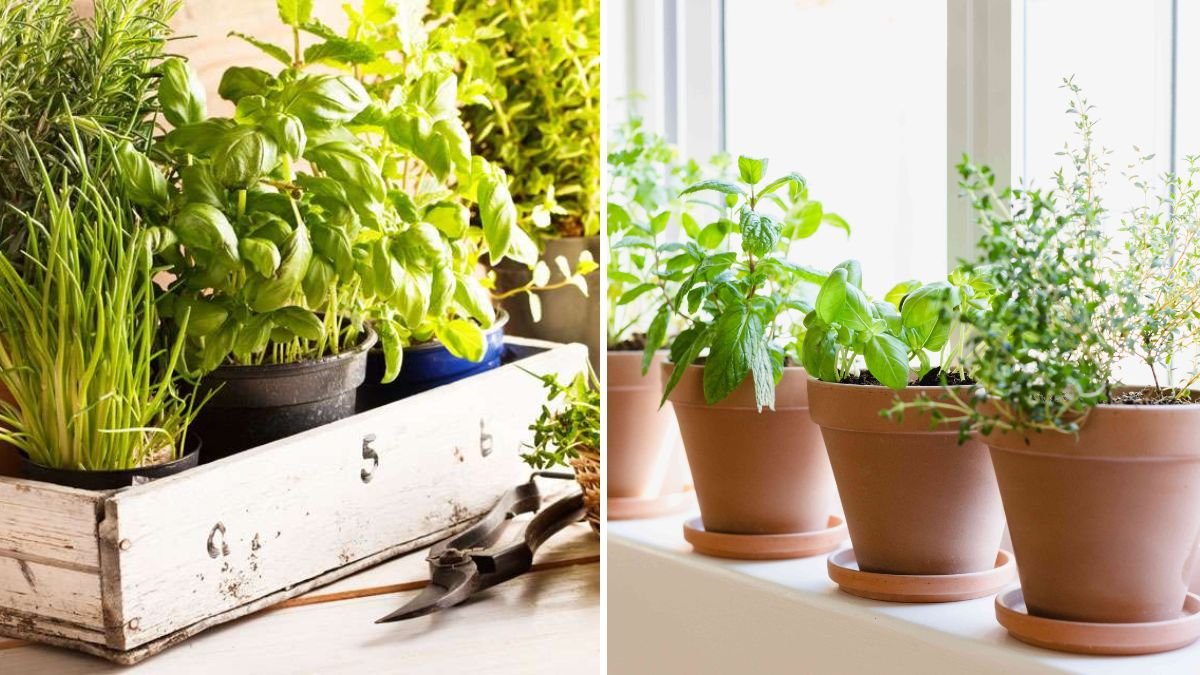Fresh herbs can transform any dish, enhancing flavor, aroma, and nutritional value. However, relying solely on store-bought herbs can be expensive, and they often lose their freshness quickly. Starting an indoor herb garden allows you to enjoy fresh, vibrant herbs year-round, right in your kitchen or living space. Indoor herb gardening is not only practical but also rewarding, offering both culinary and aesthetic benefits. This guide will take you through everything you need to know to start and maintain a thriving indoor herb garden.
Benefits of Indoor Herb Gardening
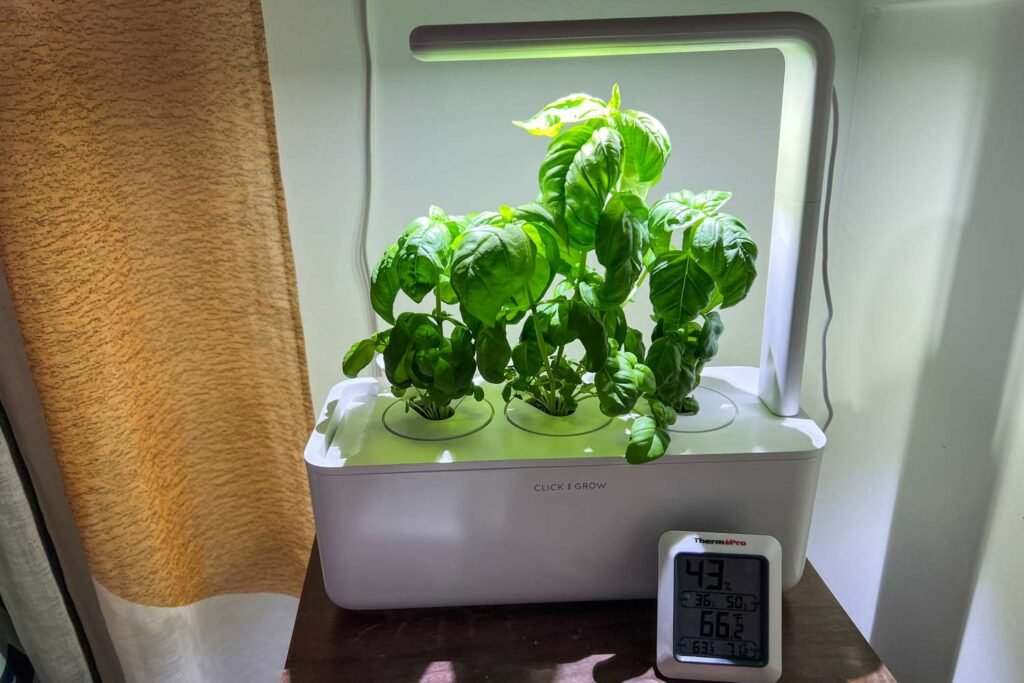
Before diving into the practical steps, it’s worth understanding why indoor herb gardening is beneficial:
- Freshness: Pick herbs just before use for maximum flavor and aroma.
- Year-Round Availability: Indoor conditions allow herbs to thrive regardless of season.
- Cost-Effective: Reduces the need to buy fresh herbs repeatedly.
- Aesthetic Appeal: Potted herbs enhance your home décor and create a fragrant environment.
- Health Benefits: Many herbs offer nutritional and medicinal properties, such as antioxidants and anti-inflammatory compounds.
By starting an indoor herb garden, you gain a convenient, sustainable source of flavor-enhancing plants in a small space.
Step 1: Choosing the Right Herbs
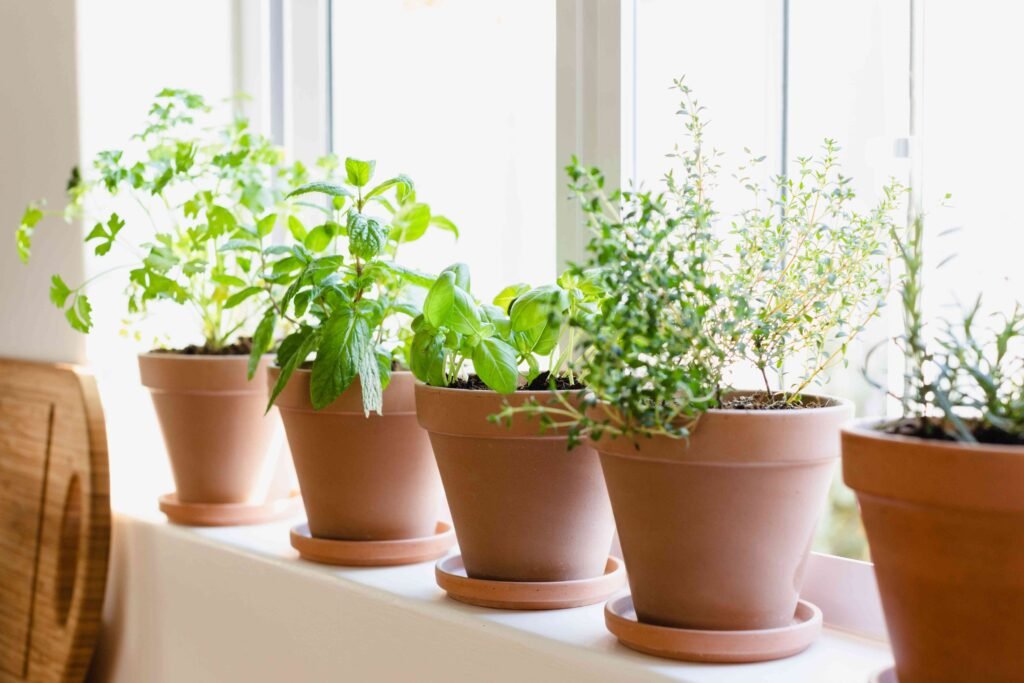
Not all herbs are equally suited for indoor gardening. Some thrive in containers and limited light, while others prefer outdoor conditions. Here are some beginner-friendly, productive herbs for indoor gardens:
- Basil: Sweet basil is perfect for culinary use and grows well in pots with ample sunlight.
- Mint: Hardy and fast-growing, mint thrives indoors but may require its own container to prevent spreading.
- Parsley: Requires moderate sunlight and does well in medium-sized pots.
- Thyme: A low-maintenance herb that grows slowly but consistently.
- Chives: Hardy and compact, ideal for windowsills or small pots.
- Oregano: A resilient herb that tolerates partial sunlight and dry conditions.
- Cilantro: Prefers cooler conditions and regular harvesting to encourage growth.
Selecting the right mix of herbs ensures a continuous supply of fresh flavors for your cooking throughout the year.
Step 2: Choosing Containers and Soil
The container and soil play a crucial role in the success of your indoor herb garden.
Container Selection
- Size: Most herbs grow well in pots 6–12 inches deep. Larger herbs, like basil, may need bigger containers.
- Material: Ceramic, terracotta, or plastic pots work well. Ensure they have drainage holes to prevent waterlogging.
- Mobility: Lightweight pots or containers with trays make it easy to move herbs to follow sunlight.
Soil Requirements
- Potting Mix: Use high-quality, well-draining potting soil. Avoid garden soil, which may compact in containers.
- Organic Matter: Mixing compost or organic fertilizer enhances soil fertility.
- pH Balance: Herbs generally prefer slightly acidic to neutral soil (pH 6.0–7.0).
Good soil and containers support strong root development and healthy, aromatic foliage.
Step 3: Providing Adequate Light
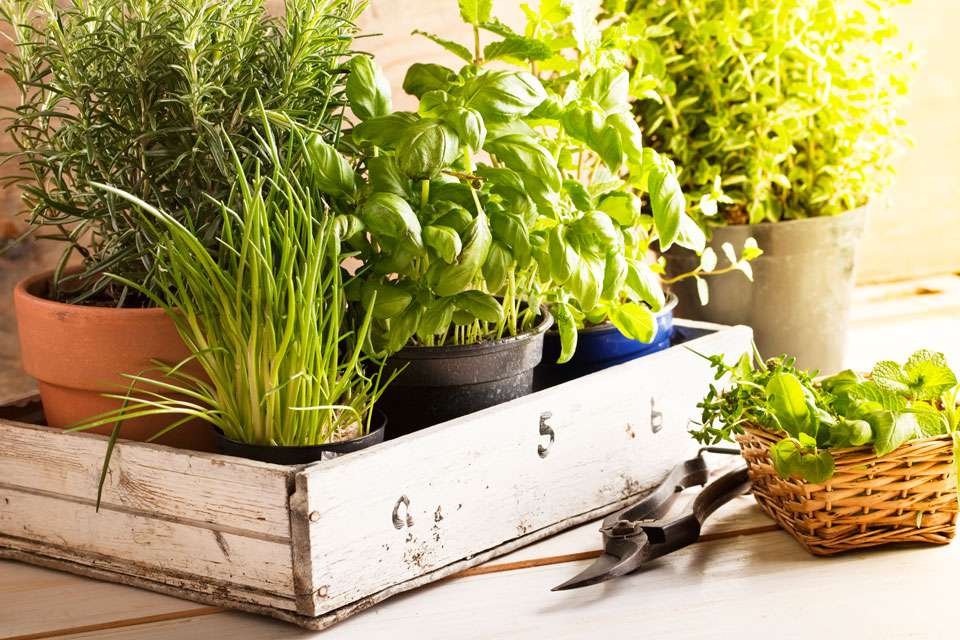
Light is critical for photosynthesis and healthy herb growth.
Light Sources
- Natural Sunlight: Place your herb garden near a south- or west-facing window where plants receive 4–6 hours of direct sunlight daily.
- Artificial Lighting: If natural light is limited, use LED grow lights. Position lights about 6–12 inches above the herbs and provide 12–16 hours of light per day.
- Rotation: Rotate pots regularly to ensure even growth and prevent leggy stems.
Proper lighting ensures robust growth, vibrant leaves, and rich flavor in your herbs.
Step 4: Watering and Humidity
Watering and humidity are key factors in keeping indoor herbs healthy.
Watering Guidelines
- Frequency: Water when the top inch of soil feels dry. Avoid overwatering, which can cause root rot.
- Method: Water deeply, allowing excess to drain. Avoid getting foliage wet to prevent fungal diseases.
- Observation: Herbs like rosemary and thyme prefer slightly drier conditions, while basil and parsley need more consistent moisture.
Humidity Management
- Ideal Humidity: Most herbs thrive at 40–60% humidity. Indoor heating or air conditioning can dry out the air.
- Solutions: Place a humidity tray under pots or mist herbs occasionally. Grouping plants together can also increase humidity.
Balanced watering and humidity create an optimal environment for lush, flavorful herbs.
Step 5: Fertilizing Indoor Herbs
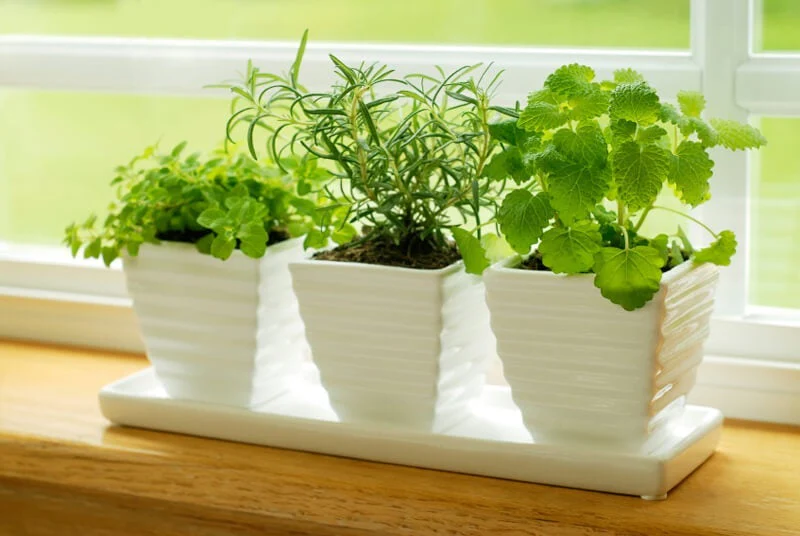
Herbs grown indoors depend on you for nutrients. Fertilization ensures strong growth and flavorful leaves.
Fertilization Tips
- Type: Use a balanced, water-soluble fertilizer (10-10-10) or an organic option like fish emulsion or compost tea.
- Frequency: Fertilize every 4–6 weeks during the growing season. Avoid overfertilizing, which can lead to excessive foliage with reduced flavor.
- Application: Follow package instructions and water plants after fertilizing to prevent root burn.
Proper nutrition keeps herbs healthy and productive, maximizing both yield and taste.
Step 6: Pruning and Harvesting
Pruning and harvesting encourage continuous growth and prevent herbs from becoming leggy or overgrown.
Pruning Tips
- Regular Trimming: Pinch off stems regularly to promote bushier growth.
- Remove Flowers: Prevent herbs like basil from flowering too early, as this can reduce leaf quality.
- Sanitize Tools: Use clean scissors or pruners to prevent spreading disease.
Harvesting Guidelines
- Basil: Harvest leaves from the top to encourage branching.
- Mint: Cut stems just above a leaf node for continuous growth.
- Parsley and Chives: Snip outer leaves first, allowing inner leaves to continue growing.
- Timing: Harvest in the morning for the best flavor and aroma.
Consistent pruning and harvesting maintain healthy, productive plants and ensure a constant supply of fresh herbs.
Step 7: Managing Pests and Diseases
Indoor herbs are less prone to pests than outdoor plants but can still encounter challenges.
Common Pests
- Aphids: Tiny insects that cluster on new growth. Remove manually or use insecticidal soap.
- Spider Mites: Thrives in dry conditions. Increase humidity or use neem oil if needed.
- Whiteflies: Small flying insects that can weaken plants. Trap or treat with organic insecticides.
Disease Prevention
- Root Rot: Avoid waterlogged soil to prevent fungal infections.
- Powdery Mildew: Ensure good air circulation and avoid overhead watering.
- Cleanliness: Remove dead or yellowing leaves to maintain plant health.
Regular monitoring and preventive care keep your indoor herb garden thriving.
Step 8: Expanding Your Indoor Herb Garden
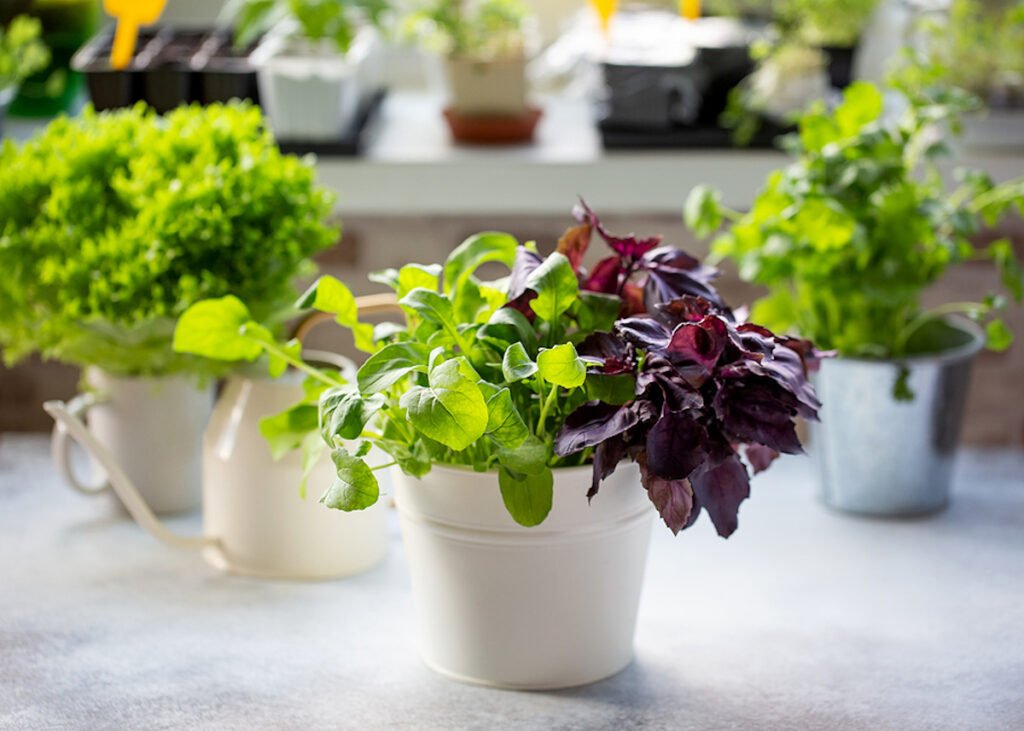
Once you’ve mastered a few herbs, consider expanding your garden:
- Vertical Gardens: Use wall-mounted planters to maximize space.
- Windowsill Rows: Group small pots on sunny ledges for easy access.
- Companion Planting: Grow herbs with similar light and water requirements together for convenience.
Expanding your indoor herb garden provides more variety for cooking and creates a lush, aromatic indoor environment.
Conclusion
Starting an indoor herb garden is a practical, rewarding way to enjoy fresh flavors year-round. By choosing the right herbs, providing appropriate containers, soil, light, water, and nutrients, and practicing consistent pruning and harvesting, anyone can cultivate a thriving indoor garden. Indoor herbs not only enhance your culinary creations but also contribute to a healthier, greener living space.
Whether you’re a beginner or an experienced gardener, growing herbs indoors offers endless opportunities for experimentation and enjoyment. With attention to detail and proper care, your indoor herb garden will provide fresh, aromatic, and flavorful herbs every day, transforming your kitchen into a fragrant oasis and ensuring your dishes are always at their flavorful best.
